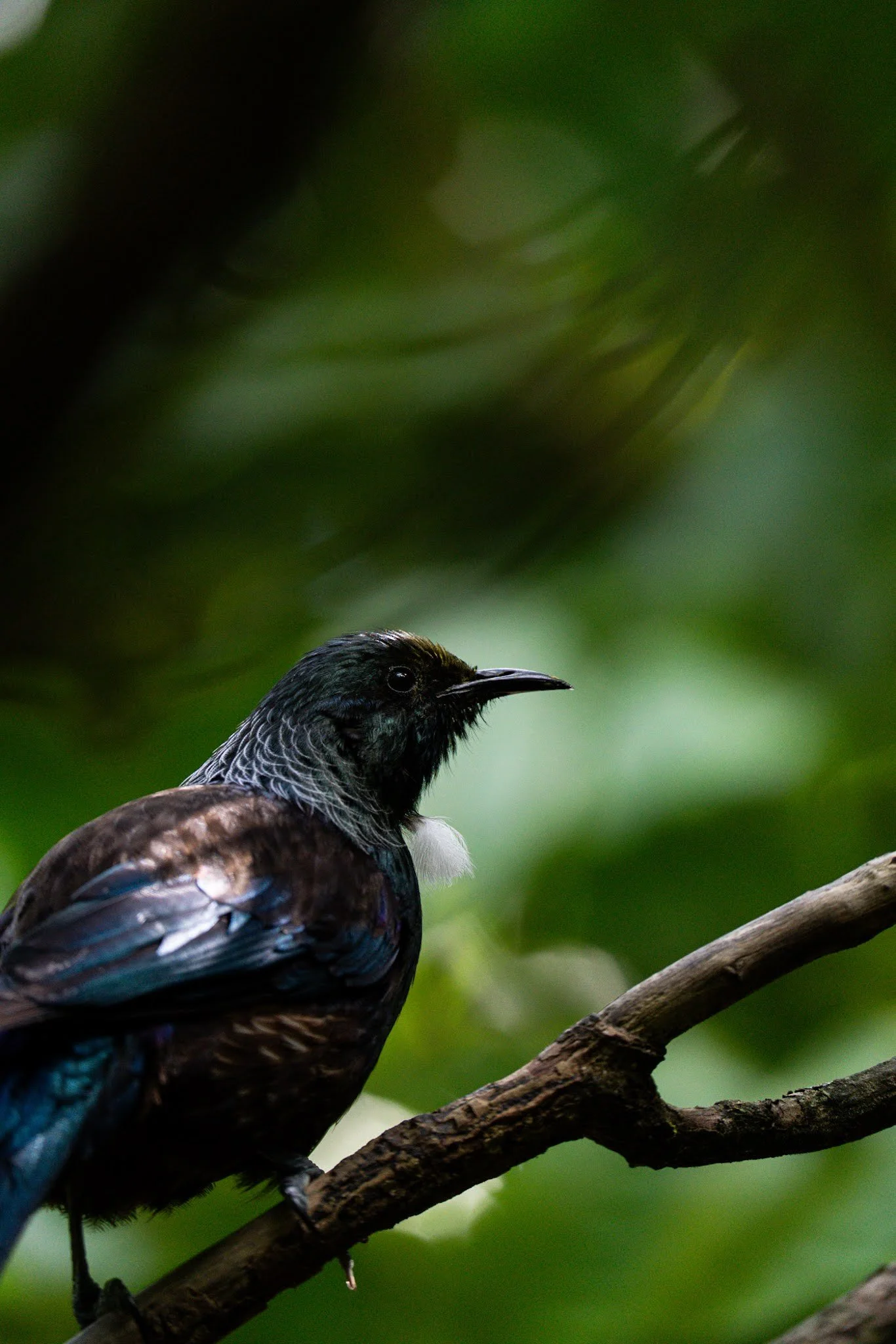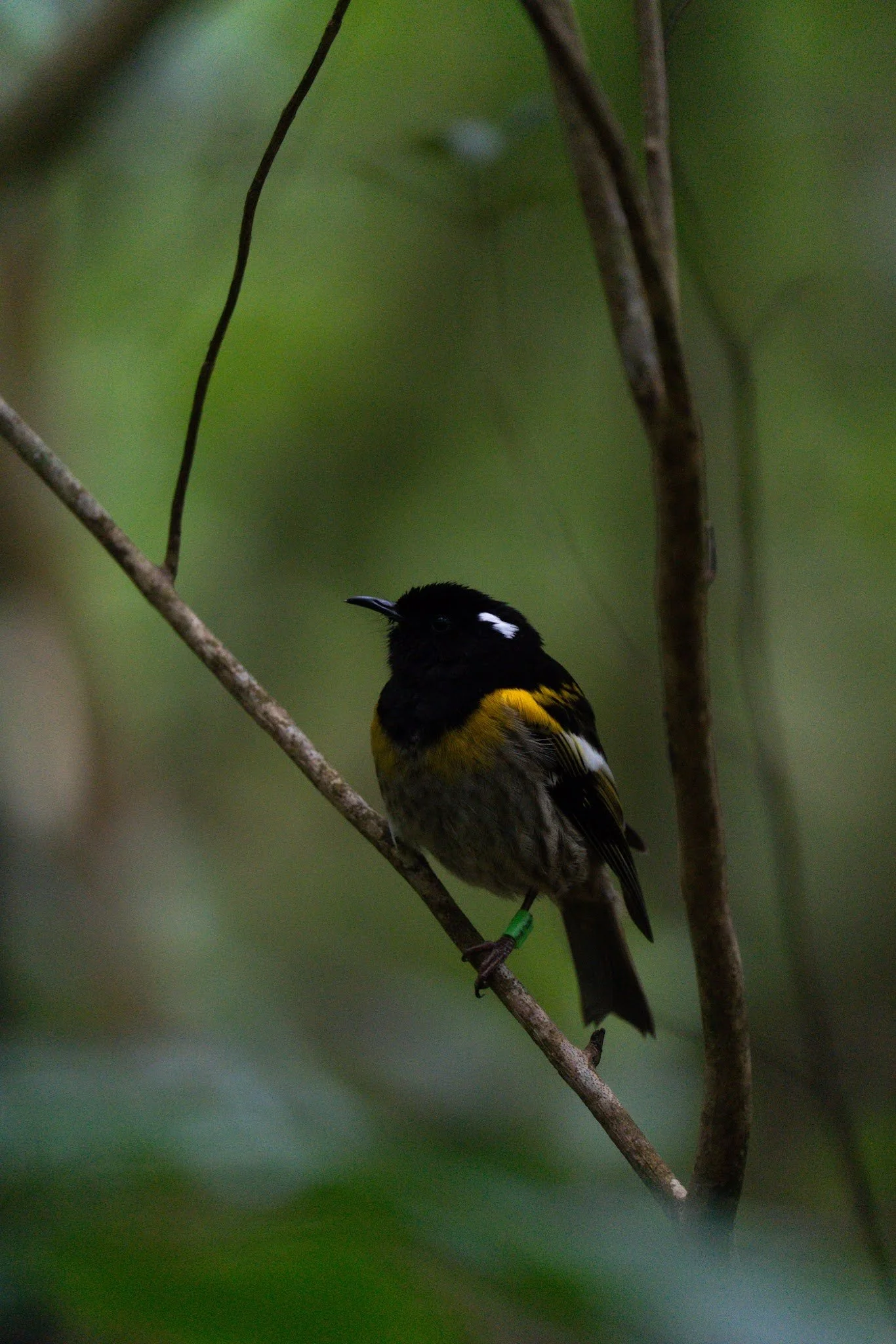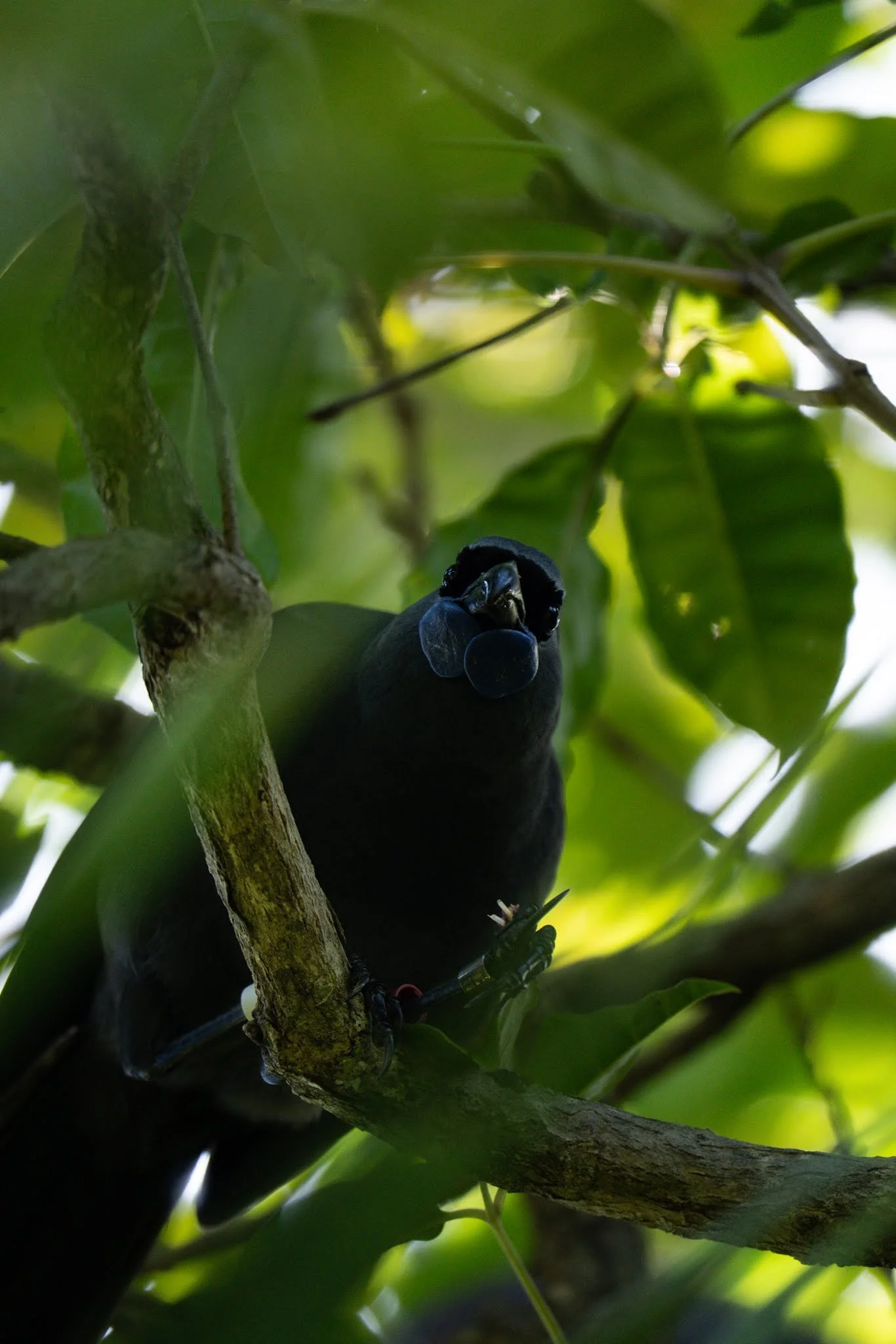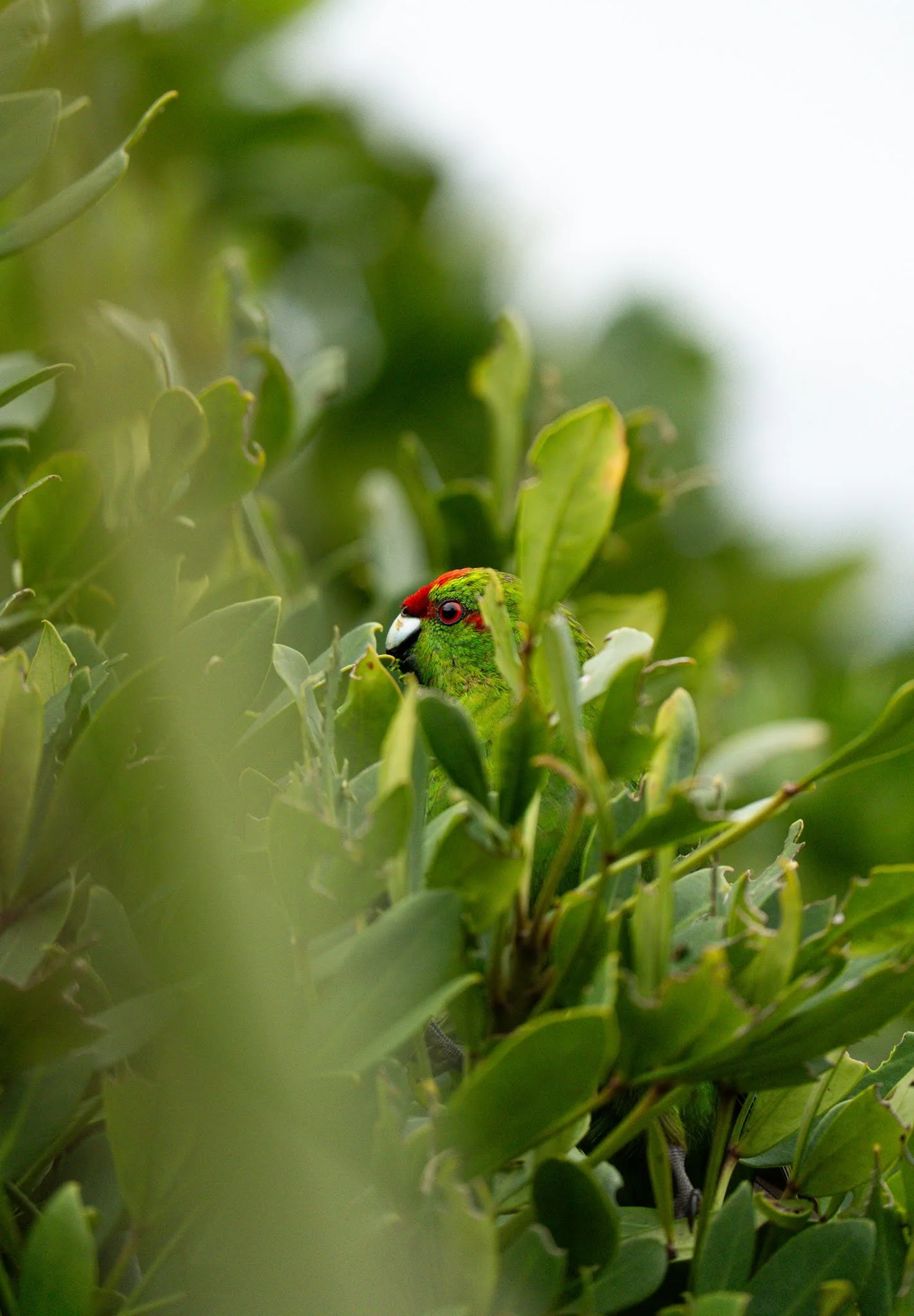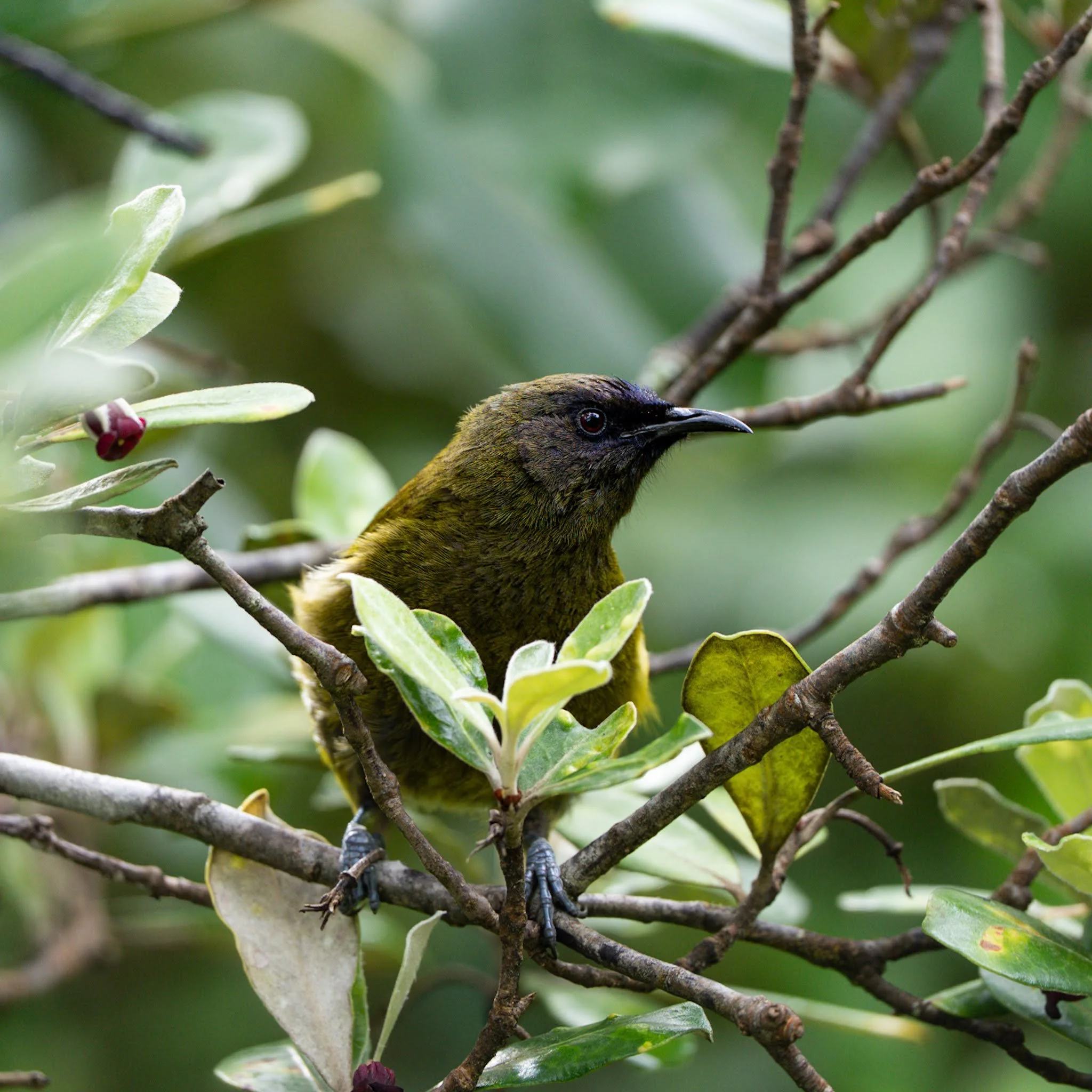Tirtitiri Matangi Overnight Adventure
A date was marked in my calendar. That of 13 of May. This was because on this date, Tirtitiri Matangi hut bookings opened for the season, and I was set on securing an overnight stay on a weekend date. Not an easy feat.
Luckily, I was quick on the draw and managed to secure two beds in the bunk house on Tiritiri Matangi for a weekend in September.
What is Tiritiri Matangi?
Tirtitiri Matangi is an island sanctuary home to many of New Zealand’s most precious flora and fauna. It is located in the Hauraki Gulf, about 90 minutes by Ferry from downtown Auckland.
This 20-hectare island was reforested after being used for farming in the 1800s. Rather than allowing natural regeneration to occur, which would take generations, a more active approach was taken. This was in the form of ‘spade brigade’ volunteers who worked at replanting and trapping, so a pest-free sanctuary could be created.
Between the years of 1984-1994, volunteers planted 280,000 trees and shrubs on the island. Now, around 60% of the island is covered in forest with the remaining areas being left to provide varied habitats - such as grassland for takahe, and pond/wetland for pateke.
Getting There and Staying Overnight
To get to the island, you need to book the ferry with Explore Group Ferry. If you are just going for a day trip, you can book through their website. For an adult return, it costs $95 and takes around 90 minutes, with one stop at Gulf Harbour. On the weekend, the ferry departs Auckland CBD at 8:30 and will depart the island at 4 pm. So you have around 6 hours to explore the island.
If you are staying the night, you will need to book the ferry via email info@exploregroup.co.nz
During the week, the ferry times are different, and also there are no ferries running on Monday and Tuesday.
To stay overnight, you will book the bunkhouse via the Doc Website. There are 3 rooms in the bunkhouse that you can stay in: the kokako room, the kahu room, and the tuatara room. They do tend to book out, especially on weekend dates - so make sure you book in advance. We booked a few months in advance and were in the Kokako room, which has occupancy for 5 people.
When you stay overnight, the next day you will take the afternoon ferry returning. For some reason, I thought there was a morning ferry returning, so we didn’t prepare enough food for the next day. Learn from my mistakes, and bring plenty of food for two whole days if you are spending one night on the island.
Preparing for the trip
I suck at preparing. I am the kind of human who will leave things to the very last moment. So, on Friday, with a Saturday departure, I started to think about all the things I needed to get ready.
things to bring
Sleeping bag
Pillow case - they have pillows
Torch - I didn’t actually pack on of these, so be better than me and do this. Especially if you wish to explore at night.
Food - enough food for however long you will be there. This needs to be in sealed containers, and not open food bags - as they don’t want pests coming to the island.
Blanket - I get cold, so I brought a blanket
Clothes - warm clothes, a raincoat - as the weather can be changeable,
comfortable shoes - you most likely will do a lot of walking while here, so comfortable shoes are a must
Headphones - this is for people like me, who find it hard to fall asleep with noise. The rooms are all close to the living space, and some people like talking late.
charger - the bunk house has power, run by solar and a diesel generator
. A bag/container for your rubbish - there is no rubbish collection for the island, so you need to bring all rubbish home with you. This is the same for people going on a day trip. The bunkhouse does have a compost bin, which you can put food scraps in
A charged camera - this was a must for me. If I forgot this one, I would most likely have cried
Hat, sunscreen, etc - NZ sun can be a real pain, literally, so bring all your sun safe products
Things you don’t have to bring
Water tablets/filters - in the bunkhouse, they have safe, drinkable water. Still bring a filled water bottle, though. At the visitor centre, there are also water, tea, and coffee facilities
A boombox - this is personal lol. Someone, when we were there, brought a boom box to listen to their music too. It is inconsiderate. Do not be that pain in the ass person.
Cultery/plates, etc - when staying overnight, they have a fully stocked kitchen
Gas cooker - they have a cooker in the bunkhouse, and there is a ban on all open fires on the island
First Day
When we arrived, we had our ranger biosecurity debriefing, put our luggage on the trailer(yes - you don’t even need to carry your bags to the bunkhouse, luxury), and went out and explored.
We decided to go up the Wattle Track, which takes you to the lighthouse, visitor center, and the bunkhouse.
The walk takes around 30 minutes, depending on how many stops you make. And you should make many, many stops. This is a track to savor, not race through. There are many seats - some by water troughs where birds take a drink or a bath, or by the sugar feeder, where you will see birds feasting. Do not rush this walk, is t’s the only thing I can say. Take your time. Stop often, listen, peer into trees, crane your neck up high, and be silent and calm, and birds will find you.
On our first day, we saw many birds.
Hihi
A male hihi
Hihi was one of the first birds we saw. They are quite sexually distinct. The males are bright yellow, the females are duller brown. Their tails are upright and their noise is high-pitched. They were translocated to the island in 1995,
Korimako
Bellbird, so named, because well, their song sounds like the chime of bells - especially in the morning chorus. The males have olive green-purplish heads, and females are more dull, with a white stripe across the cheek from the bill. They both have red eyes.
Their sounds are voluminous for such a small body, and they sound like tui.
We saw so many korimakoduring our stay. Tons. This bird self-colonised Tiritiri Matangi, meaning it flew over from the mainland, which is quite an impressive flight for such a small bird.
At the first sugar feeder, you will see these two birds. Often, the koromoko will chase away the hihi as they are quite territorial of their little feeder. I would recommend stopping at this feeder and just sitting and listening to these delightful birds
Kokako
A curious kokako peering down
People who know me know that I love Kokako. I have one tattooed on my arm, so the love runs deep—permanently etched into my skin. And I very much don’t want to get my hopes up.
However, I was fortunate. When we were around 15 minutes into our Wattle Walk, we saw two kokako high above us, hopping branch to branch - eating the flowers from a puriri tree. We sat down and just watched them, one of them swooped down close to my husbands’s head. They are not strong fliers, so a lot of their motion is hopping around and swooping short distances. We were treated to their haunting call as well.
I was a happy lass after that.
Kakariki
A kakariki in the greenery
Meaning green in Māori, the kakariki is a vibrant green parakeet that was actually once so plentiful in NZ it was considered a pest to crops. Now, they are quite rare - especially since their nesting and feeding habits mostly see them on the ground - making them easy prey.
The Kakariki was the first bird to be translocated to Tiritiri Matangi. And you can often see them just eating on the path. Which is kind of an amazing site for a bird that is very rare on mainland NZ.
This was one of my husband’s favorite encounters on the island, watching the kakariki eating karo flowers or foraging on the paths and hearing their chattering noises. I ended up getting a croctched kakariki from the gift shop, as they are just such beautiful birds.
Pōpokotea
A popokotea
For me, these birds are the socialites of the bush, as you always kind of see them chattering away in a group. We saw quite a lot of them on the Wattle Track. I hate their European name of Whitehead, as all I can think of is pimples, and these birds are way better than pimples, haha
After our walk up the track, we spent some time in the Visitor Centre. They have a gift shop, where you can get sooooo many bird-related merch. I love love love a bird-related item, so it was hard for me to only pick one thing, but my husband gave me a budget, as I have been known to spend maybe a bit too much money when confronted with cute bird things.
The good thing about this gift shop is that it is not normal consumerism - all the money you spend goes to a good cause, the island. So, go spend some money there and support New Zealand conservation.
The visitor center also has lots of cool information about the island and seats/tables to rest - both inside and outside.
The BunkHouse
We had to meet the ranger at 1:30 to have a quick overview of the bunkhouse.
So at 1:30, we marauded over there.
The bunkhouse is very well equipped. There is hot water for showers, comfortable beds, electricity, kitchen items, a toaster, and even a microwave. It is not exactly roughing it. The rooms are labelled so you know which room you are sleeping in.
It was also very warm in there.
The full list of faculties for the hut are below
Gas stove and oven
Microwave oven
BBQ
Two fridges and a freezer
All cutlery, crockery, utensils etc
Pots and pans
Dishwashing liquid, dish cloths, and dish brushes
Tea towels
Drinking water (rainwater from the tap)
Two hot showers
Two toilets (toilet paper provided)
3 rooms for public use, with 15 bunk beds in total:
Room 1 Kahu: 4 beds
Room 2 Kokako: 5 beds
Room 3 Tuatara: 6 beds
And the cost of the hut is
Adult: $48 per person
Child (0–17 years inclusive): $37 per person
Bookings
Night Adventures
The island is a different place when night falls. The day creatures snuggle up for bed, and the night critters come out.
There are many things to see, including Little Spotted Kiwi, which can be seen foraging around, tuatuara, which come out of their burrows at night to hunt, weta punga, the country’s biggest land insect, weighing around the same as a mouse, and giant centipedes. There is a lot to see at night.
The ranger also recommended going out to the beach at dusk, for the chance to see little blue penguins or korora, coming back to their nests after a day of fishing. It is best to walk down the road to the wharf, as some of the penguins have burrows more inland as well. The ranger said that first, use your ears - if you hear something, stay still, turn your light off - and you may be lucky to have one of these night critters walk close by. A past visitor even had a penguin rest on their feet before continuing the journey home.
Use a red light or put red cellophane (which they have at the hut) over your light, so as not to spook the wildlife.
Because I am the opposite of a vampire, and do not like going out at night, I was in bed sleeping by 7 pm lol. But I would recommend night adventures for less tired humans.
Day Two
Day two started with waking up to the alarm at 5:45 am. Dawn Chorus on Titirtiri Matangi has been on my bucket list for a while, so I was not going to miss it.
Dawn chorus is basically all the birds singing their beautiful voices into the morning air - it is a concert, with bird songs, and it is basically the most beautiful and relaxing concert you will ever attend.
So, I set my alarm to vibrate, as I didn’t want to wake my bunkmate, and my husband and I ventured into the dark to find a spot to listen. We sat down, closed our eyes, and listened. There was the chime of the koromiko, the croaks of the tui, and, hovering over that, the mournful call of the kokako. It is a soundtrack that is now deeply entrenched in my mind, and I am happy for it.
The only bad thing about that morning was the lack of coffee. Because I thought I could leave the island at 10 am, when the ferry arrived to drop off the day’s visitors, I did not pack coffee. To say I am a monster without coffee is an understatement. I am beastly. I am surprised my husband survived. But the bird song did soothe my head and make me a little more bearable to be around.
Robin
Another bird that is tattooed on my arm is the North Island Robin or toutouwai. The welcoming party of the forest, the one who will hop over and say hi, is due to their friendly, lovely nature. Surprisingly, I didn’t see one until my second day. But once I saw one, I saw 5 more that day. Hopping around, foraging, calling out into the forest air.
Pāteke
My husband was perched next to a pond and called me over, saying he saw a pateke. When I joined him, I saw the feathery butt of a pateke as he swam away haha. I guess he preferred my husband’s company.
Pateke are New Zealand’s rarest mainland waterfowl. They are brown, with white around their eye. They were first introduced to Tiri in 1987. In June 2002, 5 males and 2 females were introduced, followed by another 4 in July. However, these last four were all predated by harriers.
By the pond, when you first start walking up the track, is where you may see them. But they are nocturnal, so you may have a better chance of seeing them at night.
Quail
The ranger, during his speech about biosecurity, said that to report any pests you may see on the island, etc, rats, however, don’t report the quail, as these are not rats. If it has no tail, you didn’t see anything, is what he said. There are quite a few little brown quail on the island, and you may see them quietly foraging in the forest litter or on the path. They are not a native species, but they are cute buttons.
Takahe
There are a pair of Takahe on the island that often hang out in the grass area feeding. However, when we came, they were incubating an egg, so they were not straying far from that area.
By 3:30 pm, my husband and I were exhausted. Boarding the ferry was welcome. We were sad to go, there is something magical about being on Tiri and having such beautiful birds around every bend of a path, but we were ready to go home and eat a hot meal.
